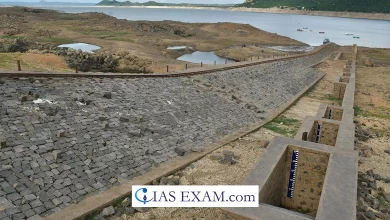The Lethal Chinese Friendship
[GS Paper 2 – International Relations, Debt-Trap Diplomacy]
Context – China’s intervention has proved disastrous for the economies of Myanmar, Sri Lanka and Pakistan.
China’s Belt and Road Initiative (BRI) has left scores of Lower and Middle-Income Countries (LMIC) saddled with “hidden debts” totalling USD 385 billion.
The Case Studies:
- Myanmar
- Myanmar, China’s closest neighbor with a long history of cross border trade, was the first country to voluntarily turn towards Beijing, from 1988, when the State Law and Order Restoration Council (SLORC) took over the reins of government.
- World sanctions followed, but Beijing reassured the generals of its continued support and in 1989, signed a treaty of trade and cooperation that made China the sole supporter of the illegitimate military government.
- The strong western sanctions after 2007, made China virtually its sole trading partner. The link with China became essential for the regime’s survival but did little to increase economic prosperity.
- Wood alone accounts for about 70 percent of Myanmar’s exports to China. It’s clear that China is stripping bare Myanmar’s centuries-old teak forests.
- Pakistan
-
- In 2012, Pakistan signed on to the China Pakistan Economic Corridor. New Delhi and Washington imagined wrongly that the CPEC would lead to a major People’s Liberation Army-Navy (PLAN) expansion into the Indian Ocean through Gwadar, which even now is a largely disused port.
- As a conservative IMF estimate put it, Islamabad’s poor management of the economy and reckless borrowing has put its immediate financial needs (2022) at $51 billion.
- Projects chosen are unviable like the Gwadar port and the Lahore Metro and attracted huge public criticism. The CPEC was put on hold and rebooted.
- The IMF warned Islamabad of the CPEC repayment boosting the current account deficit, forcing Pakistan to cut Chinese interest payments for 10 years.
- The CPEC has been a humbling experience for China and an economic disaster for Pakistan.
- Sri Lanka
-
- Against all economic surveys and advice, the Hambantota port was built, it floundered and Sri Lanka transferred the land as equity to China for 99 years.
- From 2012 to 2016, China accounted for 30 per cent of all FDI to Sri Lanka, becoming the top source of foreign investment.
- Today China is funding 50 projects in the country, involving more than $1 billion, including the Colombo Port and the Lakvijaya thermal power plant.
- Today, the Sri Lankan economy is in complete meltdown, with China holding the largest amount of Sri Lankan debt.
- Private banks have run out of funds to finance imports. Its main sources of revenue, tourism and remittances, have dried up, and the government is in a crisis.
Conclusions
China, in order to go ahead and protect its own interests has put in place a network of investments which has led to several low and middle income countries in severe debt.
The recourse to availing Chinese money by Myanmar, Pakistan and Sri Lanka has led to a feeling of hubris among the leaders, inducing them to take bad economic decisions in the perception that Beijing is footing the bills.





.png)



